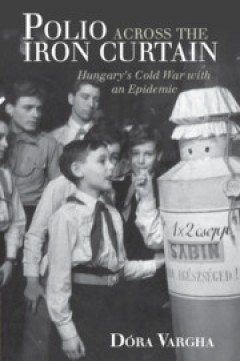Ditapis dengan

ENCOUNTERS AND PRACTICES OF PETTY TRADE IN NORTHERN EUROPE, 1820–1960
This open access book uncovers one important, yet forgotten, form of itinerant livelihoods, namely petty trade, more specifically how it was practiced in Northern Europe during the period 1820–1960. It investigates how traders and customers interacted in different spaces and approaches ambulatory trade as an arena of encounters by looking at everyday social practices. Petty traders often belo…
- Edisi
- -
- ISBN/ISSN
- 9783030980801
- Deskripsi Fisik
- xiv; 353p; ill.
- Judul Seri
- -
- No. Panggil
- 381.094809034 ENC J

POLIO ACROSS THE IRON CURTAIN :HUNGARY'S COLD WAR WITH AN EPIDEMIC
By the end of the 1950s, Hungary became an unlikely leader in what we now call global health. Only three years after Soviet tanks crushed the revolution of 1956, Hungary became one of the first countries to introduce the Sabin vaccine into its national vaccination programme. This immunization campaign was built on years of scientific collaboration between East and West, in which scientists, spe…
- Edisi
- -
- ISBN/ISSN
- 9781108355421
- Deskripsi Fisik
- ix, 268 p ; ill
- Judul Seri
- -
- No. Panggil
- 616.835009439 POL D

A CIVIL SOCIETY; THE PUBLIC SPACE OF FREEMASON WOMEN IN FRANCE, 1744-1944
"James Smith Allen explores the two-hundred-year struggle to initiate women as full participants in the masonic brotherhood that shared in the rise of France’s civil society and its “civic morality” on behalf of women’s rights. "
- Edisi
- -
- ISBN/ISSN
- 9781496229687
- Deskripsi Fisik
- -
- Judul Seri
- -
- No. Panggil
- -

ISLAM AND HERITAGE IN EUROPE:PASTS, PRESENTS AND FUTURE POSSIBILITIES
Islam and Heritage in Europe provides a critical investigation of the role of Islam in Europe’s heritage. Focusing on Islam, heritage and Europe, it seeks to productively trouble all of these terms and throw new light on the relationships between them in various urban, national and transnational contexts. Bringing together international scholars from a range of disciplines, this collection ex…
- Edisi
- -
- ISBN/ISSN
- 9780367491499
- Deskripsi Fisik
- -
- Judul Seri
- -
- No. Panggil
- -

PROTAGONISTS OF WAR :SPANISH ARMY COMMANDERS AND THE REVOLT IN THE LOW COUNTRIES
This is a book on early modern war narratives. In order to reach a fuller understanding of war narratives in general and those on the Revolt in the Low Countries in particular, it is necessary to return to the stories as they came into being. How did people describe the events they participated in, witnessed or heard about? Episodic descriptions of war events and their protagonists can be …
- Edisi
- -
- ISBN/ISSN
- 9789461664044
- Deskripsi Fisik
- 388p
- Judul Seri
- -
- No. Panggil
- 949.203 RAY p

DIVINING NATURE:AESTHETICS OF ENCHANTMENT IN ENLIGHTENMENT FRANCE
The Enlightenment remains widely associated with the rise of scientific progress and the loss of religious faith, a dual tendency that is thought to have contributed to the disenchantment of the world. In her wide-ranging and richly illustrated book, Tili Boon Cuillé questions the accuracy of this narrative by investigating the fate of the marvelous in the age of reason. Exploring the affiniti…
- Edisi
- -
- ISBN/ISSN
- 9781503614178
- Deskripsi Fisik
- -
- Judul Seri
- -
- No. Panggil
- 700.108094409033 CUI d

At home in Renaissance Bruges :connecting objects, people and domestic spaces…
How did citizens in Bruges create a home? What did an ordinary domestic interior look like in the sixteenth century? And more importantly: how does one study the domestic culture of bygone times by analysing documents such as probate inventories? These questions seem straightforward, yet few endeavours are more challenging than reconstructing a sixteenth-century domestic reality from written so…
- Edisi
- -
- ISBN/ISSN
- 9789462703179
- Deskripsi Fisik
- 320 p
- Judul Seri
- -
- No. Panggil
- 747.249332 DEG a
 Karya Umum
Karya Umum  Filsafat
Filsafat  Agama
Agama  Ilmu-ilmu Sosial
Ilmu-ilmu Sosial  Bahasa
Bahasa  Ilmu-ilmu Murni
Ilmu-ilmu Murni  Ilmu-ilmu Terapan
Ilmu-ilmu Terapan  Kesenian, Hiburan, dan Olahraga
Kesenian, Hiburan, dan Olahraga  Kesusastraan
Kesusastraan  Geografi dan Sejarah
Geografi dan Sejarah